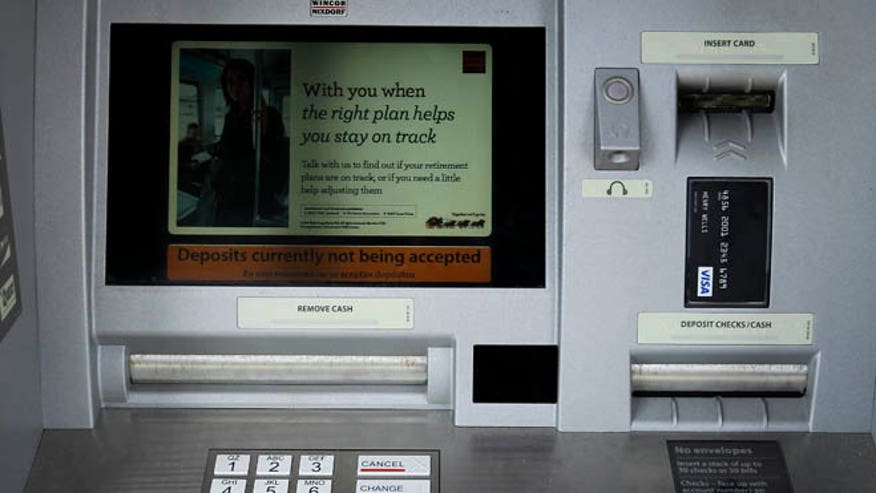GOP-led states trying bolster budgets by limiting government assistance programs

April 19, 2011: A Wells Fargo ATM bank machine is shown here in Solana Beach, California. (Reuters)
WASHINGTON – Kansas is bleeding money.
Lawmakers in the Sunflower State have been scrambling for years to make up a $400 million revenue gap following a 2012 income tax cut that left deep holes in the state budget.
ADVERTISEMENT
Republican Gov. Sam Brownback wants recover some of the money by placing limits on government assistance.
Starting in July, people in Kansas who collect government assistance will be limited to a single ATM withdrawal not exceeding $25 per day. The Kansas law also prohibits public-assistance spending at swimming pools, tattoo parlors and video arcades.
Though it might sound extreme to some, Kansas is just the latest GOP-led state to launch campaigns to cut or limit public assistance.
A 2014 Pew Research Center survey found that 73 percent of Republicans and 32 percent of Democrats believe the government can’t afford to spend much more on assistance programs. The number of families receiving cash through the Temporary Assistance for Needy Families program stood at 1.5 million at the end of 2014.
When Brownback signed the bill in April he defended it by saying the primary focus isn’t a handout but instead to “get people back to work, because that’s where the real benefit is – getting people off public assistance and back into the marketplace with the dignity and far more income there than the pittance that government gives them.”
Shannon Cotsoradis, president of the advocacy group Kansas Action for Children, told Bloomberg News that state lawmakers “acted on anecdotes” about TANF cards being used on cruise ships and casinos and that the information used to sway lawmakers isn’t “data-driven.”
But lawmakers in a growing number of states believe chipping away at a budget shortfall can be done by limiting the amount of government assistance being doled out.
In Michigan, the state Senate recently passed a bill that would put families on the welfare chopping block if their children are regularly absent from school. The “Parental Responsibility Act” would give the state the ability to cut off assistance if a child whose parents are receiving assistance is chronically truant.
If the child is younger than 16, the whole family could lose its cash benefits.
“During the recession there were lots of blue states, for fiscally driven reasons, that were cutting welfare,” Liz Schott, a senior fellow at the liberal Center on Budget and Policy Priorities, a Washington think tank, told Bloomberg News. “This year’s cuts feel more ideologically driven.”
In May, Missouri’s Republican legislature overrode a veto by Gov. Jay Nixon, a Democrat, to enact a bill that would take away assistance from more than 6,400 children -- 2,600 of them below the age of 5, his office said in published reports.
Nixon described the bill “a misguided measure that punishes poor children” in a “zeal to reduce reliance on government assistance.”
And in Arizona, lawmakers slashed the amount of time residents could stay on assistance to 1 year – the shortest window in the nation.
The Associated Press described the cuts as a reflection of the “prevailing mood” among lawmakers who believe that public assistance programs are what keeps the poor from getting back on their feet permanently.
But not everyone subscribes to the sentiment.
Jessica Lopez, 23, said cutting off benefits isn’t fair.
Lopez, who gets $133 per month, gave birth to her son while living in a domestic violence shelter and has struggled to hold onto jobs because she has dyslexia and didn’t finish high school.
“We’re all human,” she told the AP. “Everybody has problems. Everybody is different. When people ask for help, we should be able to get it without having to be looked at wrong.”
Sent from my iPhone
No comments:
Post a Comment